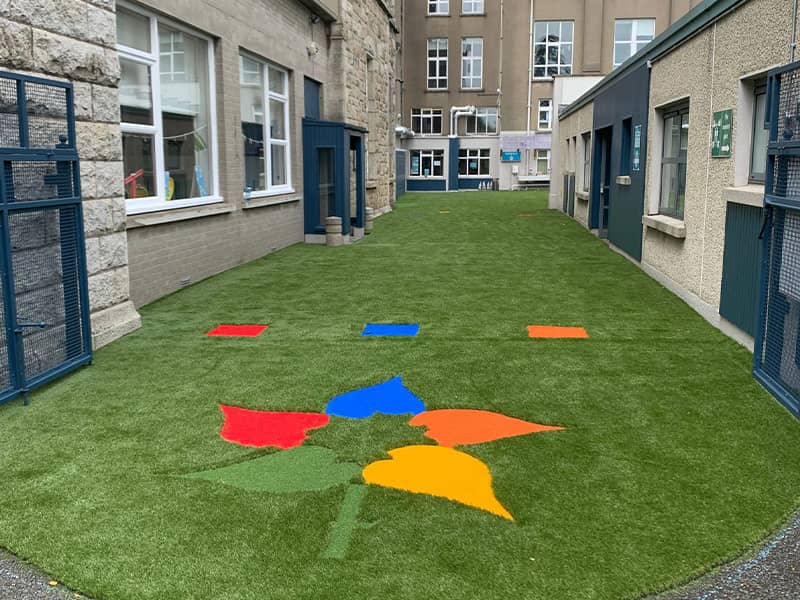
At Mount Anville, the ASD unit had an outdoor space, but it wasn’t doing much for the children. It was a plain concrete yard. Hard underfoot. Not the sort of place that encourages play, calm time, or sensory exploration. That’s all changed. With the addition of artificial grass, the area feels softer, safer, and far more welcoming. The difference is immediate - pupils now have a surface they can run across, sit on, or simply enjoy without the harshness of bare concrete. Design was just as important as the surface itself. Instead of leaving one big open square, we used colour and shape to break it up. Some sections invite movement and group play. Others feel calmer, quieter, a bit more contained. Children can pick where they want to be, depending on how they feel that day.
Teachers have noticed the change too. They now have an outdoor area that works for more than just breaks. Lessons can move outside when the weather allows. Activities can be adapted to the space, whether that’s structured group work or a few minutes of downtime in a sensory corner. It’s simple really. A yard that once felt hard and limited now feels alive and useful. The transformation shows how swapping concrete for grass can open up choice, encourage inclusion, and create a space that supports learning as much as play.